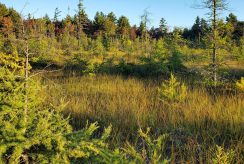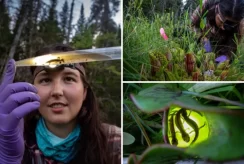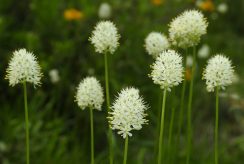Carnivorous plants are widespread throughout the world, and their characteristics depend on the specific conditions of their environment. These plants are unique not only in the way they feed, but also in their physical characteristics, which make them fascinating. Their particular shapes and colors make them veritable works of art. And the fact that they can’t live in nutrient-rich soils means they’ll grow in secluded areas, increasing their rarity.
This combination of aesthetic appeal and rarity is what attracts the interest of collectors. Some will go so far as to use illegal methods to get their hands on the most vulnerable species.
For example, in 2015, 4 poachers illegally harvested 970 specimens of muscipula dionaea in eastern North Carolina, uprooting almost 3% of the entire natural population living there.
The Dionaea Muscipula species can be grown anywhere, but these little carnivorous plants grow naturally in only one place in the world: a 100 km radius around Wilmington, North Carolina.
In 2014, Governor Pat McCrory signed a law making it illegal to collect this species in the wild. Such was the harvesting in the wild that aurorities had to mark the little carnivorous plants with orange paint to identify them as monitored.
In 2016, one of these poachers was the first to be convicted of this new offense. He was sentenced to between six and 17 months in prison, Port City Daily reported. Two of the other poachers will receive probation and the fourth is awaiting trial.
When poaching was just a misdemeanor carrying $50 in fines, “people got a slap on the wrist in court, and they didn’t care,” Debbie Crane, communications director for the Nature Conservancy’s North Carolina chapter, told Scientific American.
However, in January 2015, another reality awaited carnivorous plant poachers, just one month after the crime became a misdemeanor. North Carolina wildlife officer Fred Gorchess received a call reporting a man with a large bag crossing the road near a North Carolina hunting area, WWAY News reported.
As a result, the wildlife officer stopped a car that matched the witness’s description. The men told him they were birdwatching. That’s when he saw the Dionaea Muscipula bags and stopped them. Later, in November 2015, two more men were arrested for stealing more than 1,000 Dionaea muscipula and two Sarracenia from Orton Plantation, according to WWAY News coverage.
The Charlotte Observer reported that the second group of dionaea muscipula thieves was jailed on $1 million bail, an “amount more commonly reserved for murderers”. The Charlotte Observer also reported that of the two men arrested, one had a 2012 conviction on his record for taking wild plants and the other had several “plant-related priors”.
So it’s unfortunate that poachers are able to harvest such unique species, especially as alternatives are now available through laboratory micropropagation techniques. These species can then be “cloned”, making the cultivation of these plants more “sustainable”.
That’s why it’s so important not to take a species from the wild. If the plant is unique to you, it’s even more so to the ecosystem in which it lives. Take a photo of it, admire it and watch over its growth in the wild.
Here are some resources in case you spot an endangered carnivorous plant:
Carnivorous plant sighting report form – Carnivorex
If you witness illegal harvesting, please contact S.O.S Poaching
Article source : https://www.washingtonpost.com/news/morning-mix/wp/2016/07/28/a-poacher-who-stole-970-venus-flytraps-in-n-c-is-sentenced-to-prison/



